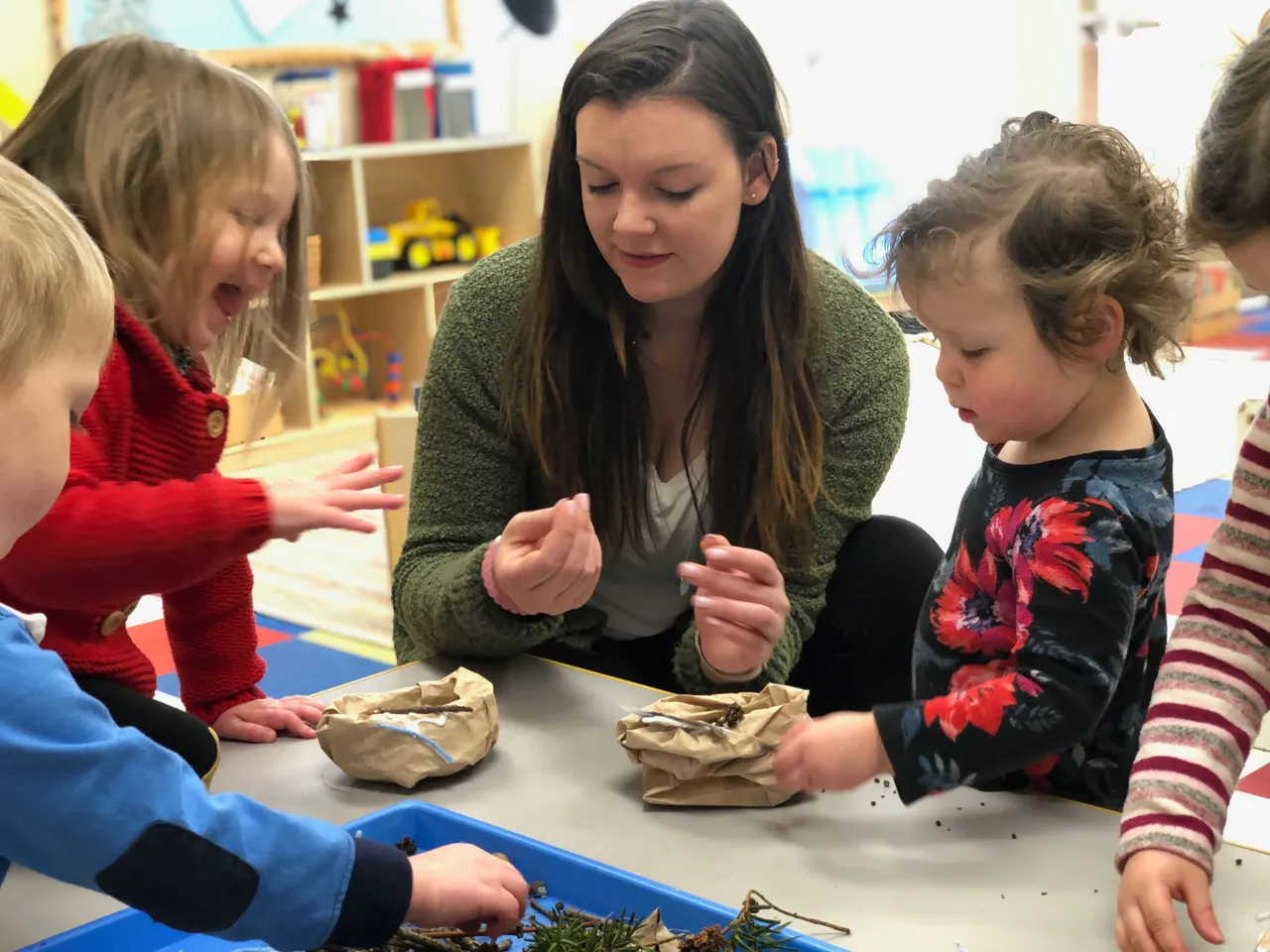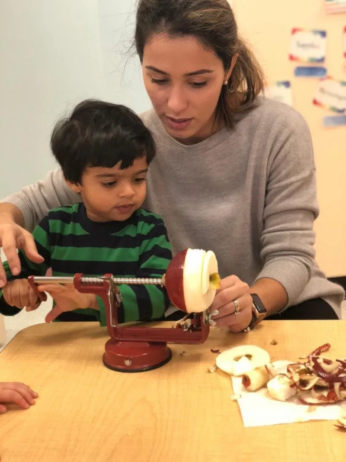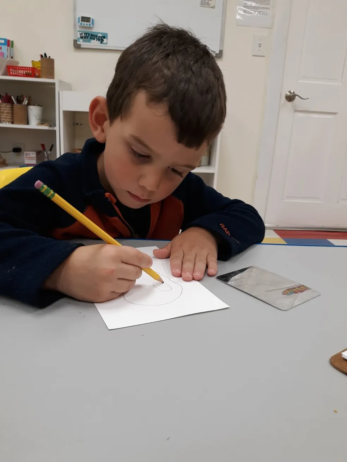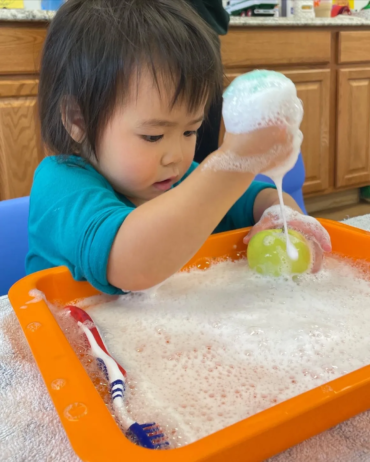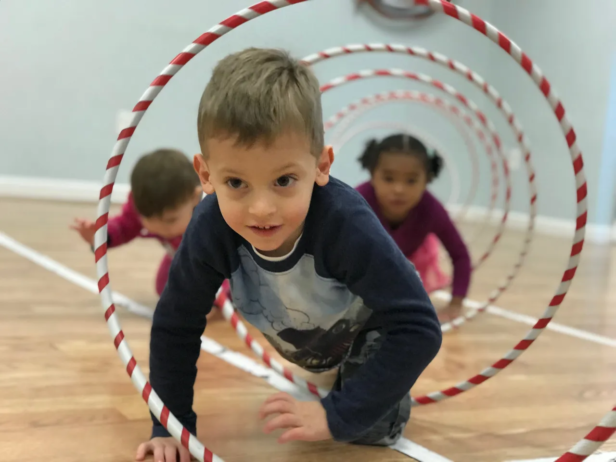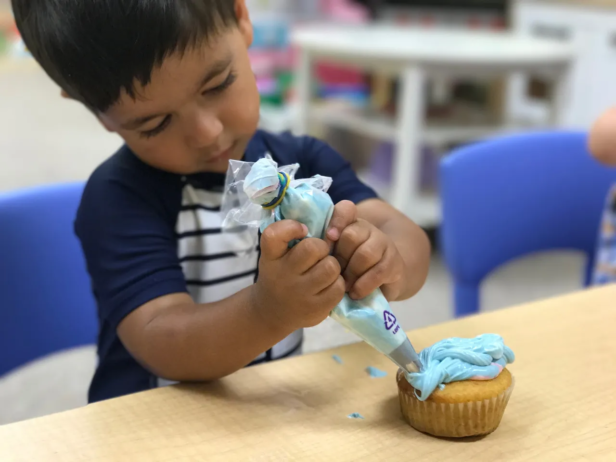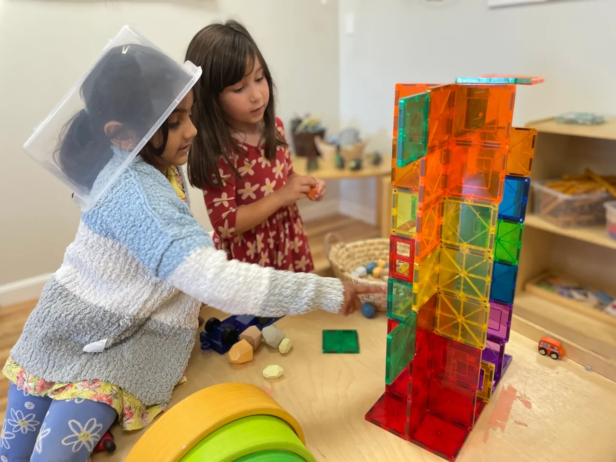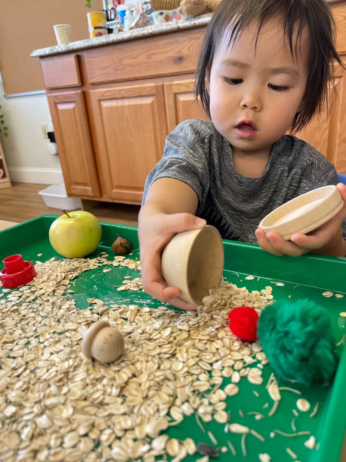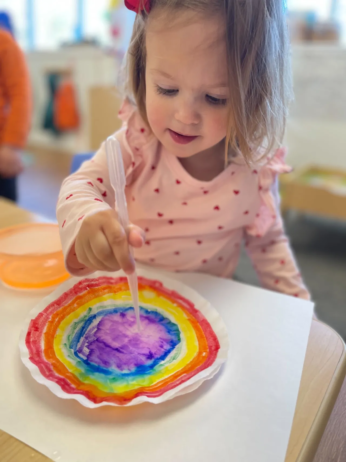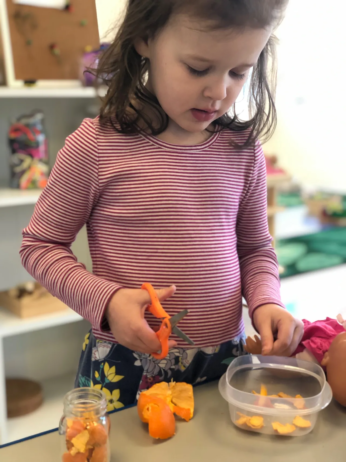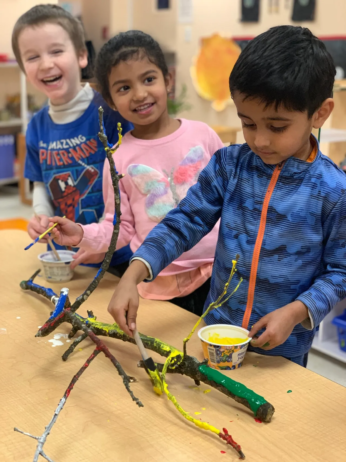Cadence schools across the country are now enrolling for Summer Programs! Be sure to ask if your school is hosting summer camp or any summer programs for school aged children in 2024.
- Overview
- Programs
- Our Team
- Reviews
About Gardengate Academy Preschool in Natick
Gardengate Academy preschool in Natick, MA is a licensed, full-service, premium early childhood education facility focusing on the success and nurturing of each child.
We incorporate the Reggio Emilia Educational Approach which encourages children to think on their own. The Reggio Emilia Curriculum ensures the children’s work dominates the classroom rather than commercial art or designs. All children have potential, and their potential should be cultivated at school. Group project work is encouraged to build social-emotional skills and allows children to learn from each other/borrow each other’s knowledge.
Teachers can pose a question to the group to encourage problem-solving. Children are given time to make connections and form ideas. The environment is calm and simple, has natural items, and incorporates the use of light. The Reggio Emilia approach supports social, social-communication, cognitive, fine motor, and gross motor skills.
Our Programs
Infants: 8 weeks – 15 months
Gardengate’s infant room provides a safe, nurturing environment for babies that is designed to promote their development and growth. The room is carefully designed to be a warm and inviting space that is both stimulating and calming for the infants in our care.
Here are some ways that Gardengate’s infant room provides a safe and nurturing environment with Reggio Emilia curriculum:
- Emphasis on Relationships: We believe that positive relationships are crucial to a child’s development, and we work to build strong, caring relationships with each infant in our care. Our teachers spend time talking to and interacting with the babies, using a soothing tone and positive body language.
- Focus on Sensory Experiences: We provide a variety of sensory experiences for babies to explore, such as soft fabrics, different textures, and natural materials. These experiences help babies develop their senses and their curiosity about the world around them.
- Use of Natural Materials: We incorporate natural materials into the infant room, such as wood, plants, and natural fabrics. This creates a calming environment that promotes exploration and curiosity.
- Play-Based Learning: We believe that play is an important way for babies to learn and develop. Our teachers provide a variety of age-appropriate toys and activities that encourage exploration, creativity, and problem-solving.
- Individualized Care: We recognize that each baby is unique, and we tailor our care to meet their individual needs. This includes feeding schedules, nap times, and play activities.
Overall, Gardengate’s infant room provides a safe and nurturing environment that is designed to support babies’ development and growth. By using the Reggio Emilia curriculum, we are able to provide a child-centered approach to learning that encourages exploration, creativity, and a love of learning from the very beginning.
Toddlers: 15 months – 2.9 years
We recognize that toddlers have a natural curiosity and a desire to explore and discover, and we provide an environment that supports and encourages this exploration.
Here are some ways that Gardengate offers a Reggio Curriculum anchored on a strong understanding of toddlers’ development and human potential:
- Child-Centered Approach: Our curriculum is child-centered, which means that we focus on the individual needs and interests of each child. We believe that children learn best when they are engaged and interested in what they are learning.
- Emphasis on Relationships: We recognize the importance of positive relationships in supporting children’s development. Our teachers work to build strong, caring relationships with each child, which helps to create a safe and secure environment for learning and exploration.
- Use of Natural Materials: We incorporate natural materials into our curriculum, such as wood, plants, and natural fabrics. This creates a calming environment that promotes exploration and curiosity.
- Play-Based Learning: We believe that play is a crucial way for toddlers to learn and develop. Our curriculum provides a variety of age-appropriate toys and activities that encourage exploration, creativity, and problem-solving.
- Documentation: We document children’s learning experiences through photos, videos, and written observations. This documentation helps us to understand each child’s development and interests, and it also helps parents to see their child’s progress and growth over time.
Gardengate offers a Reggio Curriculum that is anchored on a strong understanding of toddlers’ development and human potential. Our approach is designed to foster a love of learning and a sense of wonder in each child, while also providing a safe and nurturing environment for exploration and discovery.
Preschool: 2.9 – 4 years
Our preschool room is specially designed to encourage preschoolers’ interest in concrete manipulative materials and abstract concepts in a Reggio Emilia style. We believe that children learn best through hands-on exploration and discovery, and our classroom is designed to support this approach.
Here are some ways that Gardengate’s preschool room is designed to encourage preschoolers’ interest in math and STEAM in a Reggio Emilia-inspired curriculum:
- Open-ended Materials: We provide a variety of open-ended materials, such as blocks, magnets, and loose parts, that allow children to explore and create in their own unique ways. These materials promote creativity and problem-solving, while also introducing basic math concepts such as shapes, patterns, and spatial reasoning.
- STEAM Activities: We offer a variety of STEAM activities (Science, Technology, Engineering, Art, and Math) that encourage children to explore and experiment with different materials and concepts. For example, we might provide materials for children to build their own bridges, create their own circuits, or design their own experiments.
- Reggio Emilia-Inspired Learning Centers: Our classroom is divided into learning centers that are designed to promote exploration and discovery. These centers include areas for building, art, science, math, and literacy, and each center provides opportunities for children to explore and learn in a hands-on way.
- Teacher as Co-Learner: We believe that teachers are co-learners with children, and we encourage teachers to engage in learning activities alongside the children. This promotes a sense of collaboration and shared learning, while also modeling a love of learning for the children.
- Documentation: We document children’s learning experiences through photos, videos, and written observations. This documentation helps us to understand each child’s development and interests, and it also helps parents to see their child’s progress and growth over time.
Gardengate offers preschoolers the opportunity to boost their interest in math and STEAM in a Reggio Emilia-inspired curriculum. Our classroom is designed to promote exploration, discovery, and creativity, while also introducing children to basic math and science concepts in a fun and engaging way. Through our Reggio Emilia-inspired approach, we encourage children to become lifelong learners who are curious, creative, and confident in their abilities.
Pre-K: 4-5+ years
Our PreK room is specially designed to encourage children’s curiosity in exploring more of their world around them. Our program includes social awareness to build empathy in children. Our curriculum prepares children for Kindergarten in math, science, and writing, all in a Reggio Emilia style. Our goal is to build children with problem-solving, analytical thinking, emotional intelligence, empathy, cultural competence, as well as early literacy and math skills and real-world preparation.
Here are some ways that Gardengate’s PreK room is designed to encourage children’s curiosity and prepare them for Kindergarten:
- Child-Centered Approach: Our curriculum is designed to be child-centered, which means that we focus on the individual needs and interests of each child. We believe that children learn best when they are engaged and interested in what they are learning.
- Social Awareness and Empathy: We incorporate social awareness and empathy into our curriculum, helping children to understand and appreciate different cultures, backgrounds, and perspectives. We provide opportunities for children to practice empathy and build social skills through activities such as sharing, cooperation, and conflict resolution.
- STEAM Activities: We offer a variety of STEAM activities (Science, Technology, Engineering, Art, and Math) that encourage children to explore and experiment with different materials and concepts. We encourage children to ask questions, make predictions, and test their ideas, helping to build problem-solving and analytical thinking skills.
- Early Literacy and Math Skills: We provide opportunities for children to develop early literacy and math skills through hands-on activities and exploration. We introduce basic concepts such as letter recognition, phonics, counting, and number recognition, in a fun and engaging way.
- Real-World Preparation: We believe in preparing children for the real world by providing opportunities for them to practice skills such as critical thinking, collaboration, and communication. We also offer practical skills such as cooking and gardening, helping children to develop independence and self-confidence.
- Documentation: We document children’s learning experiences through photos, videos, and written observations. This documentation helps us to understand each child’s development and interests, and it also helps parents to see their child’s progress and growth over time.
Gardengate’s PreK room is designed to prepare children for Kindergarten while also building important skills such as problem-solving, analytical thinking, emotional intelligence, empathy, and cultural competence. Our Reggio Emilia-inspired approach encourages children to become lifelong learners who are curious, creative, and confident in their abilities.
Our Commitment
Our commitment is to provide high-quality care for all children, regardless of their backgrounds, in a warm, caring, and nurturing environment that fosters growth and development. Our approach to childcare is based on the Reggio Emilia philosophy, which values creativity, exploration, and collaboration.
We believe that every child is unique, and we strive to create an environment where each child feels seen, heard, and valued. Our teachers are dedicated and passionate about their work, and they bring a deep sense of love and care to their interactions with children.
We understand that children learn best through play, and we provide ample opportunities for children to engage in meaningful and stimulating activities that encourage them to explore and discover the world around them. We also believe in the importance of building strong relationships with families, and we work closely with parents to ensure that each child’s needs and interests are met.
At our center, children are encouraged to express themselves, ask questions, and take risks. We believe that this approach helps children develop a love of learning that will stay with them throughout their lives. We are committed to providing a safe, supportive, and inspiring environment where every child can thrive.
Programs Offered
Our Team

Madison Kelley
School Director
Madison graduated from UMass Amherst with a Bachelor’s Degree in Communication Disorders. She had a job as a Teacher’s Assistant at a local preschool while studying at UMass. With this teaching background, and a volunteer position at a special needs school in Ghana one summer during college, she solidified her goals to work in the education field. Immediately after college, she pursued a job teaching children with severe autism. With her variety of teaching experience, she learned that teaching children in Early Education was her passion. She started working at Gardengate in June of 2020, where she became the PreK lead teacher. From there, she worked towards becoming Director certified through coursework at MassBay and has been the Director since June of 2022.

Amanda Storth
Assistant Director
I graduated from UMass Amherst with a Bachelor’s Degree in Political Science and Social Decision Making and Rasmussen and Fisher with a CDA and PDICE! What I like about early childhood education is how cooperative it is by its very nature, we work together with colleagues, children and families, no two programs are the same! I began in 2004 and I have done a little bit of everything in the group care and OST space. I am always happy to chat and meet someone new, don’t hesitate to say hi! Fun fact about me is I am bilingual and love learning new languages! In my free time, I enjoy reading, spending time outside and baking, I love to advocate on behalf of early childhood education and educators!
Reviews from Parents

























Gardengate Academy
Natick, MA
Leave us a Review
We want to learn about your experience with Gardengate Academy. Please take a moment to share your experience with us and let us know how we are doing.


